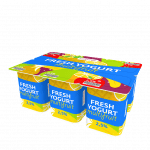Fluoropolymer coatings are widely used in food processing due to their non-stick properties, chemical resistance, and ability to withstand high temperatures. Several fluoropolymer coatings are approved for food contact, and many manufacturers specialize in these products. Here are some approved options, their manufacturers, and details on transparency for optical sensor coatings:
Approved Fluoropolymer Coatings for Food Use
- PTFE (Polytetrafluoroethylene)
- Properties: Non-stick, high-temperature resistance, chemical inertness.
- Manufacturers:
- Chemours (Teflon™): Offers a range of PTFE coatings suitable for food applications, including Teflon™ non-stick coatings.
- Whitford: Offers several grades of PTFE coatings that are food-safe.
- Transparency: PTFE coatings are generally opaque but can be formulated for certain applications with some transparency.
- FEP (Fluorinated Ethylene Propylene)
- Properties: Good chemical resistance, transparency, and non-stick characteristics.
- Manufacturers:
- Chemours: Provides FEP coatings that are suitable for food contact.
- 3M: Offers FEP coatings with various application options.
- Transparency: FEP is a clear, transparent material, making it suitable for optical applications.
- PFA (Perfluoroalkoxy)
- Properties: High chemical resistance, high thermal stability, and good mechanical properties.
- Manufacturers:
- Chemours: Provides PFA coatings that are FDA-approved for food contact.
- Saint-Gobain: Offers PFA coatings used in food processing and handling.
- Transparency: PFA is typically clear and can be suitable for optical sensors.
- ETFE (Ethylene Tetrafluoroethylene)
- Properties: Excellent chemical resistance, high-temperature performance, and mechanical strength.
- Manufacturers:
- DuPont: Offers ETFE coatings suitable for various applications, including food.
- Transparency: ETFE can be manufactured in a transparent form, although it may not be as clear as FEP or PFA.
- E-CTFE (Ethylene-Chlorotrifluoroethylene)
- Properties: High resistance to chemicals and excellent durability.
- Manufacturers:
- Hydromer: Provides coatings based on E-CTFE for food processing equipment.
- Transparency: E-CTFE is typically opaque and may not be suitable for optical applications.
Considerations for Optical Sensors
- Transparency and Clarity: For optical sensors, transparency is crucial. Both FEP and PFA are excellent choices due to their clear, transparent nature, allowing light to pass through without significant distortion or absorption.
- Surface Smoothness: In addition to transparency, the smoothness of the coating surface is important to prevent interference with optical readings.
- Compatibility: Ensure that any coating used does not interfere with the function of the sensor, especially in terms of spectral range and signal absorption.
For food contact applications, FEP and PFA are the best fluoropolymer options due to their transparency and suitability for optical sensors. Chemours and 3M are leading manufacturers providing these coatings. When selecting a coating, ensure it meets specific food safety standards (such as FDA approval) and is suitable for the environmental conditions of the application.

Leave a Reply